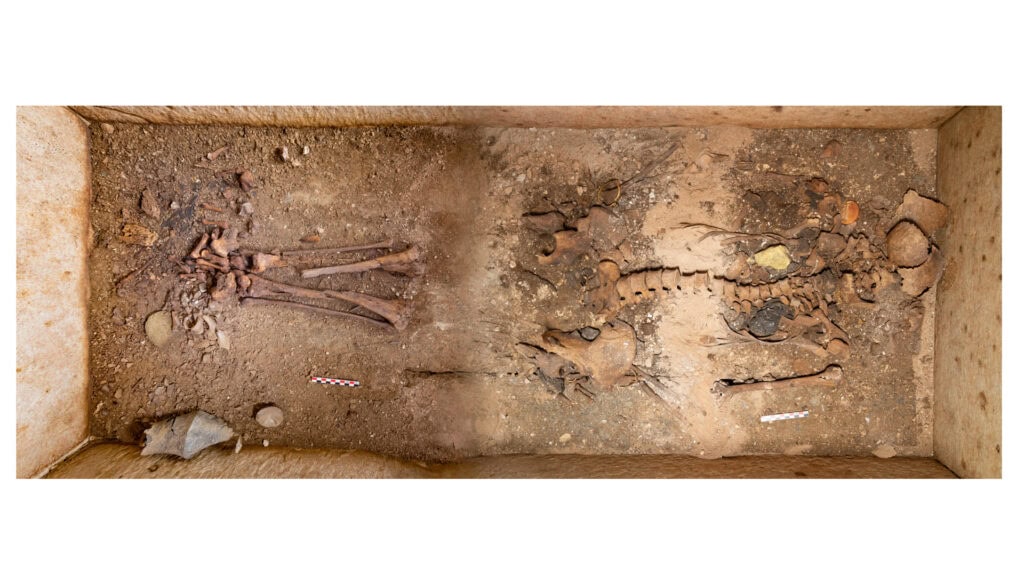The deviant burial of Neiko from Sikinos
The ancient societies of the Cyclades, unable to rationally explain human mental or pathological disorders, ascribed these phenomena to “demonic forces”. This was the case with a noblewoman from the island of Sikinos, who fell prey to the superstitions of her time. She was most likely treated as “possessed”, as indicated by the condition of her burial.
Her name was Neiko, according to the funerary epigram found on the impressive mausoleum at Episkopi in Sikinos, where lies her grave:
Her burial is considered deviant, as it differs from the standard funerary traditions of the time, combining magical-religious practices aiming to appease “evil” forces. The skeleton’s distinctive preservation state bears witness to the violent measures which the islanders took in order to keep her body immobilized and inaccessible. It seems that the poor woman died at the age of 35-40 and was deposited in her resting place with bound legs, broken femurs, a strong blow to the mouth, and arms trapped beneath the pelvis. These were acts of extreme physical violence that reveal her horrific torture, if she was alive, or the great defilement of her corpse if she was already dead. A piece of brimstone and a mass of tar were the “magical” materials placed on her chest as a sign of necrophobic exorcism. The interpretation of the “possessed woman” provides an explanation for the fact that her grave was found hermetically sealed, set into a wall of the mausoleum, as a result of which it was preserved undisturbed.
It is possible that the inhabitants of Sikinos were terrified by the idea of a “demon” by which Neiko had been possessed; however, they did not neglect to honour her in a manner befitting a noblewoman of the 3rd century AD. They built for her a magnificent monument at Episkopi in Sikinos to house her grave. There, they deposited her body with great care, adorning it with precious gold jewels. On her last journey, she was accompanied by her mirror, her personal adornment items and weaving tools, as a reminder of her female virtue that had to be preserved ineffaceable through the ages.
The undisturbed burial of Neiko was discovered in 2018 during the consolidation and restoration of the monument at Episkopi, Sikinos —a project that received the Europa Nostra Award in 2022. It is an impressive heroon which later, during the Byzantine and post-Byzantine times, was converted into a church. In the building’s interior was found the hidden grave of Neiko, a woman who turned from a victim into a symbol that represents female mental power against the darkness of ignorance and prejudice.
